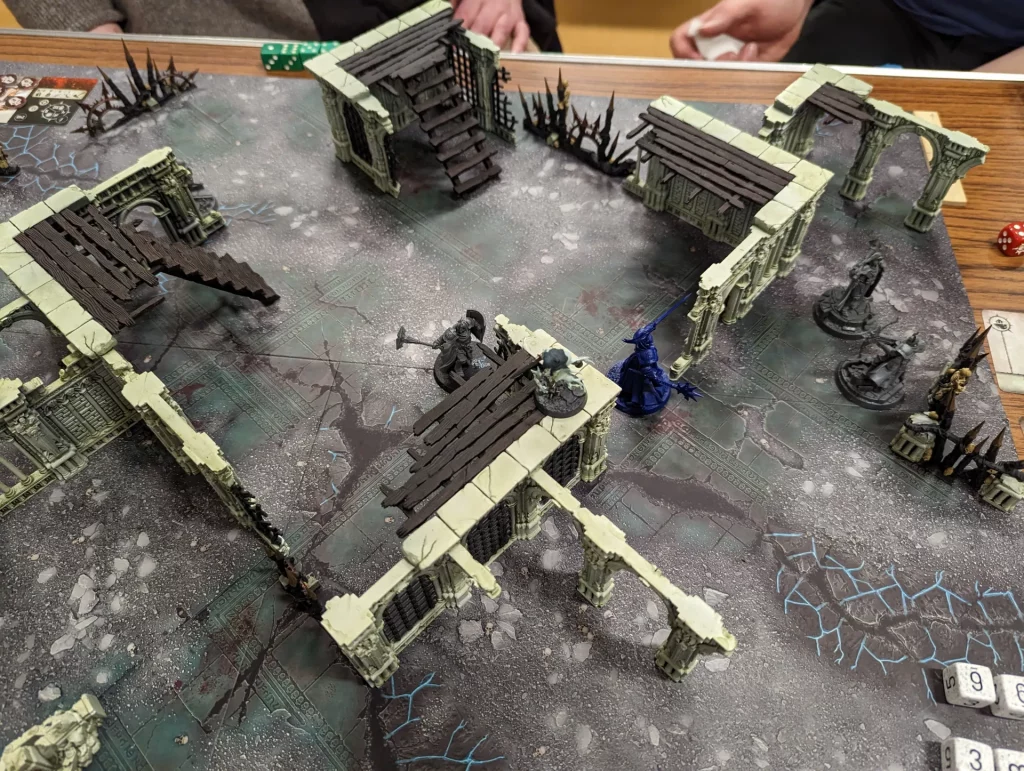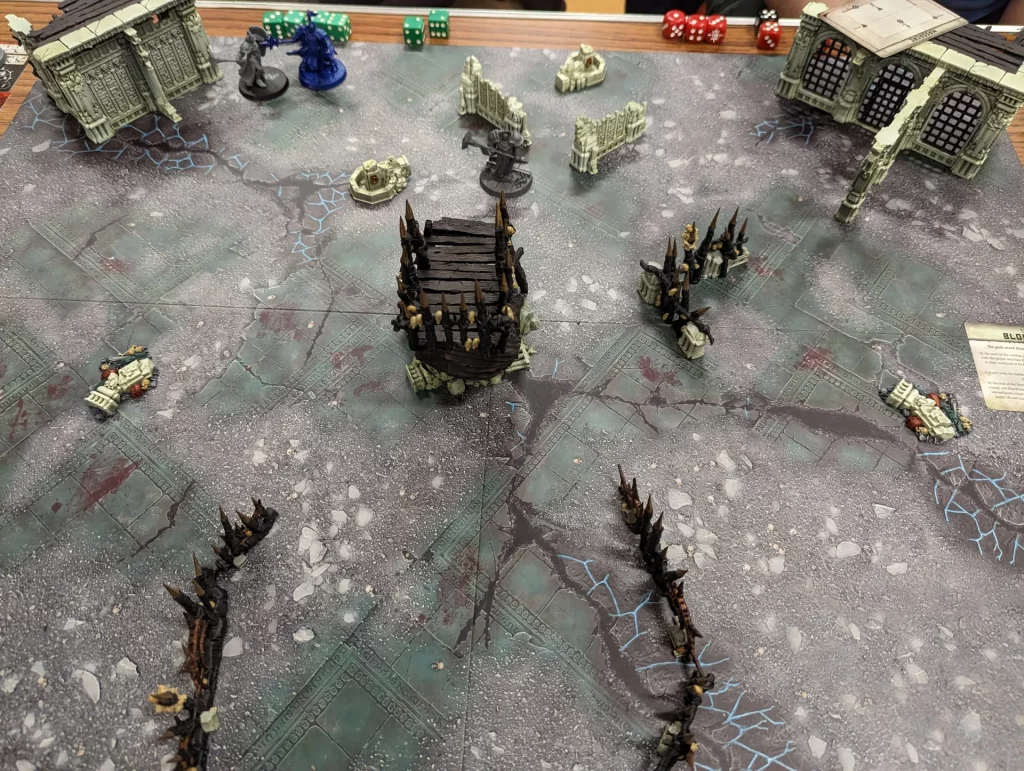War Cry
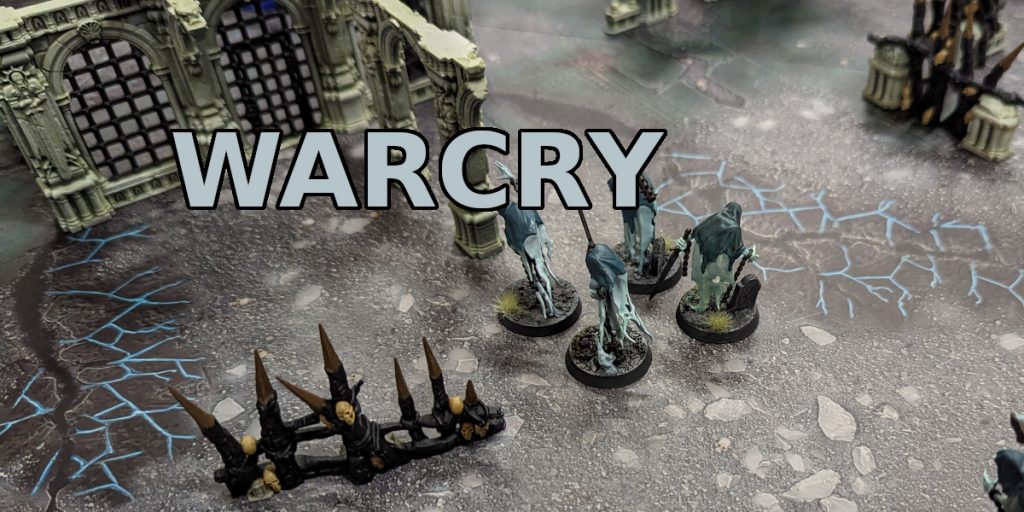
Our Friday night game at Farnborough Wargames was a new one for us – War Cry. It’s a Games Workshop game, so the sort of thing we haven’t played much of (apart from a bit of Warhammer Fantasy, and several of the RPGs, we’ve mostly managed to avoid Games Workshop material). It’s a skirmish level game, with individual figures, designed for quick encounters. The rules are available for free download. We actually got two games in during the evening – the first lasted about 2½ hours, the second about 20 minutes.
Fortunately we had someone there to provide the figures and terrain, and to explain the rules. Which was a nice change from having to prepare things myself.
I chose a faction of Nighthaunts. Restless, tortured souls that do the bidding of Nagash, the god of death. They weren’t particularly strong, but they had the ability to walk through walls and fly which turned out to be really useful. My opponent took a faction of elite warriors, the Stormcast Eternals. They are fallen heroes of humanity, and were considerably tougher than mine, but there were only five of them.
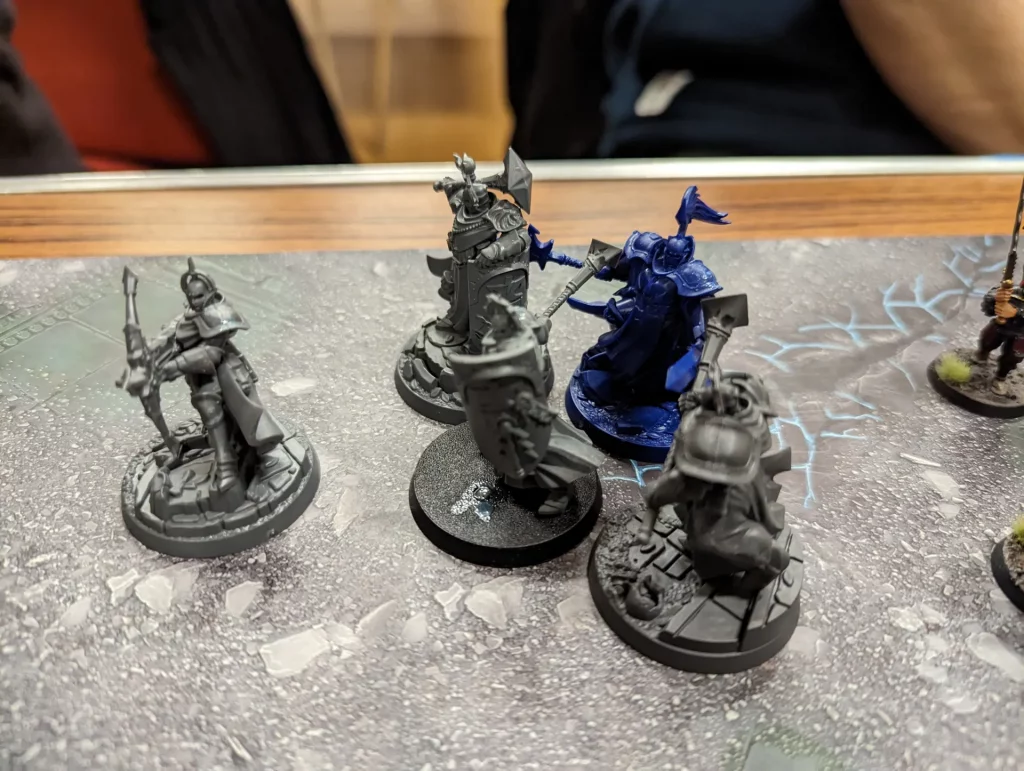
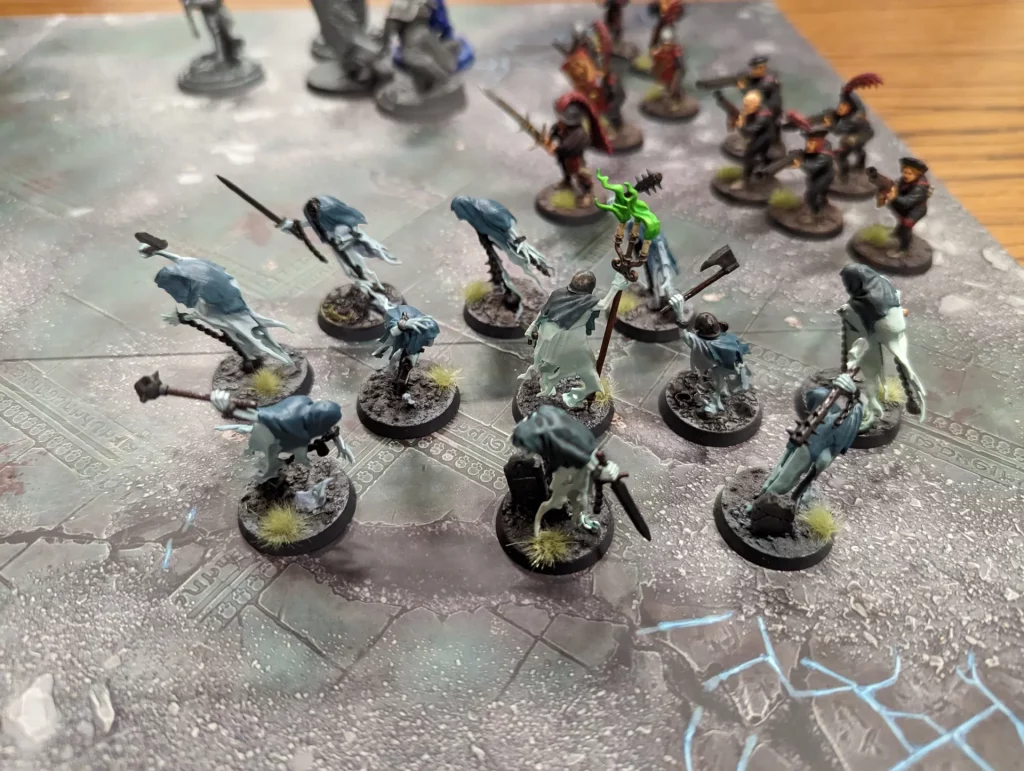
The first step was setting up the board. This was done quite nicely, though had the Games Workshop feature of needing specific terrain. You draw a card and that shows you what the board layout should be. It’s definitely a quick and easy way of doing it, but means you’re skipping the initial tactical step that you get in games like Saga.
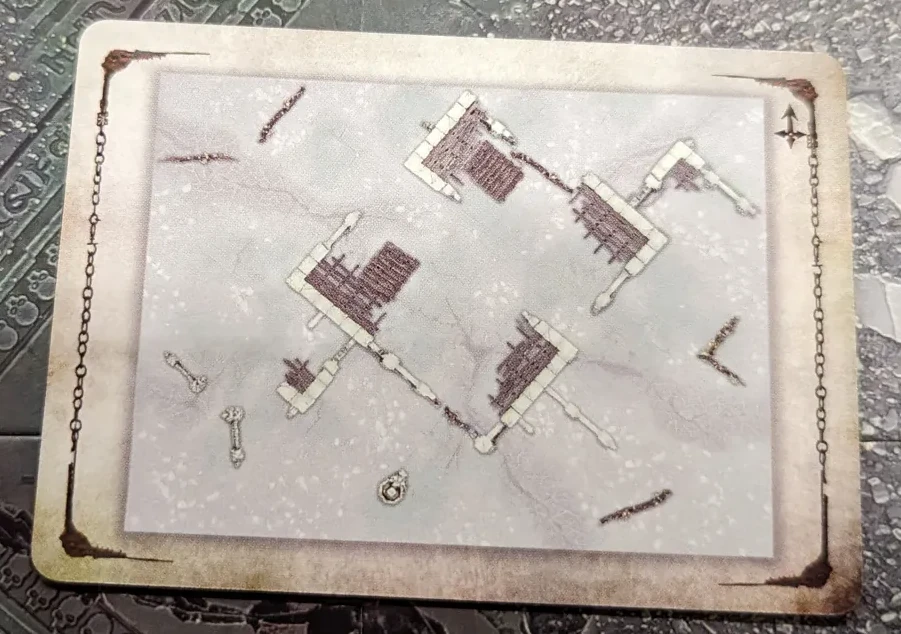
The resulting board looked pretty nice though, with a multi-levelled layout that my flying ghosts would be able to take good advantage of.
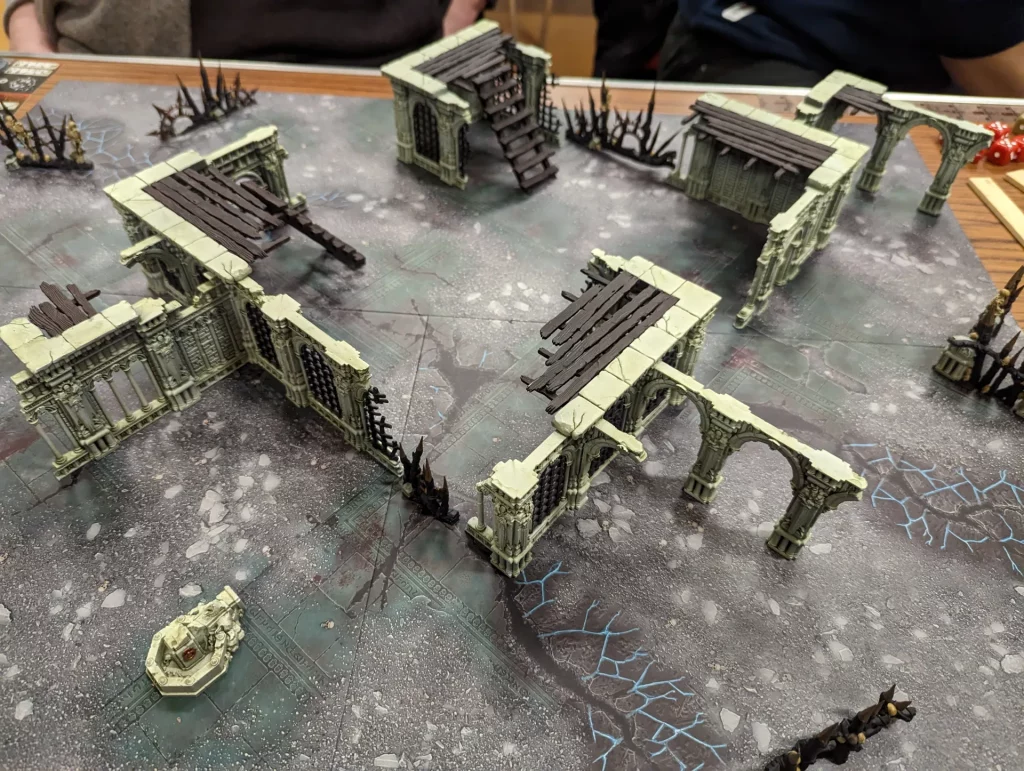
We also got to randomly select a Twist. These bring in scenario specific rules to make things more interesting. In this instance, we got Deluge, which has the effect of cutting vision down to 6″ due to heavy rain, and doubling movement costs when climbing. Both of these would benefit me, since I had no missile troops and could fly anyway.
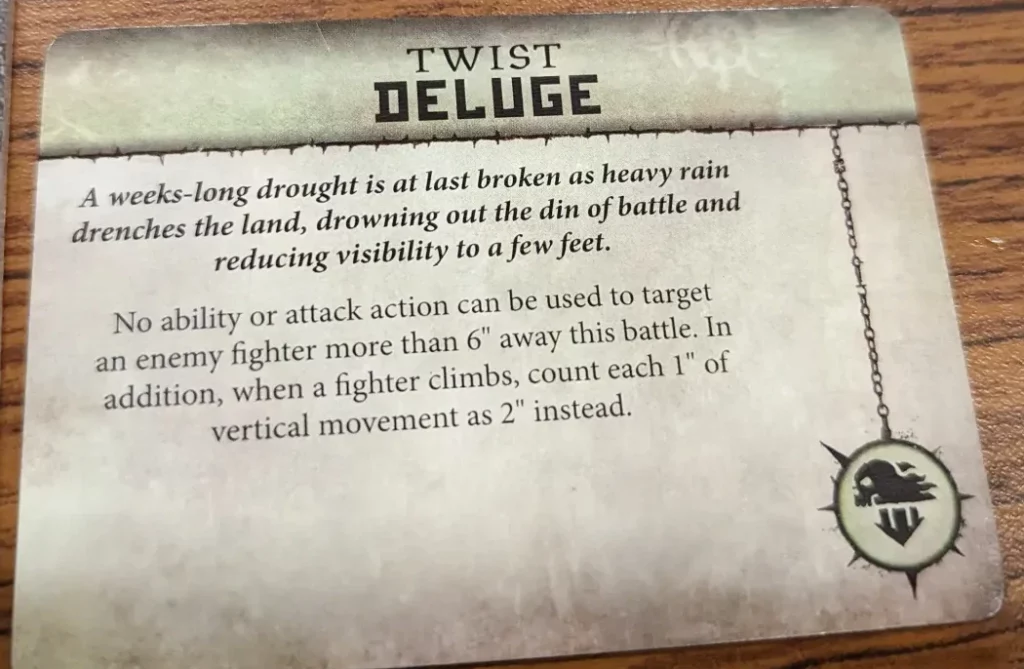
The final thing to select was initial deployment and the aim of the scenario. Each of our forces were divided into three groups – Hammer, Shield and Dagger. After that, we selected deployment. My dagger group wouldn’t come on the board until round 2.
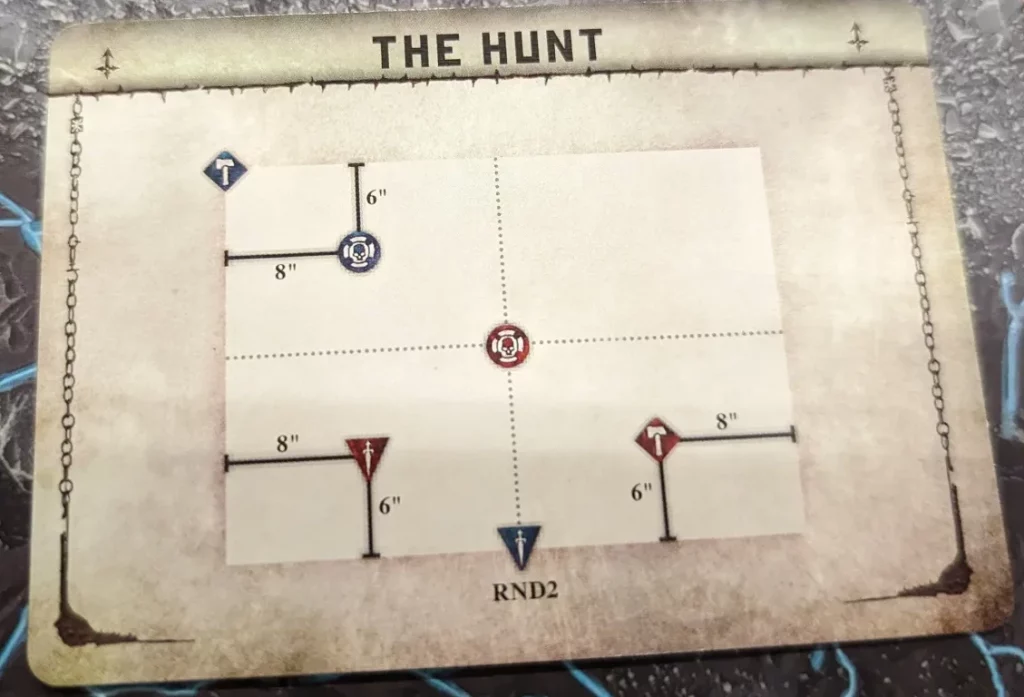
After deployment, we selected a victory card to see what the mission objectives were. It was simple – my Dagger group had to stay alive until the end of turn 6.
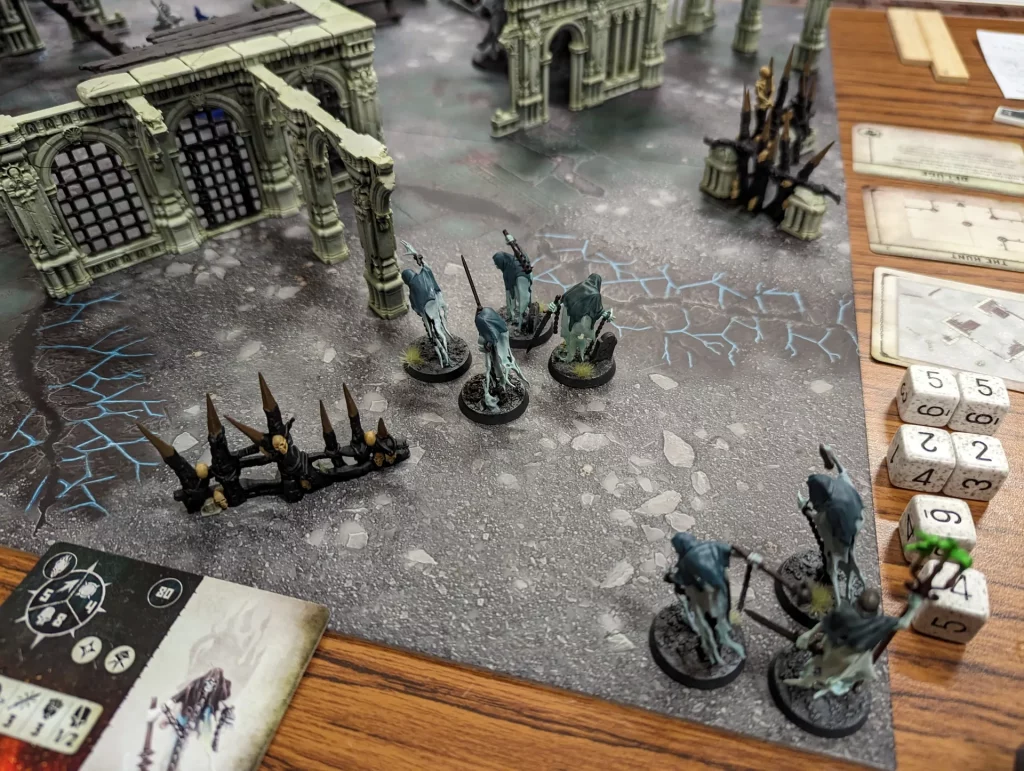
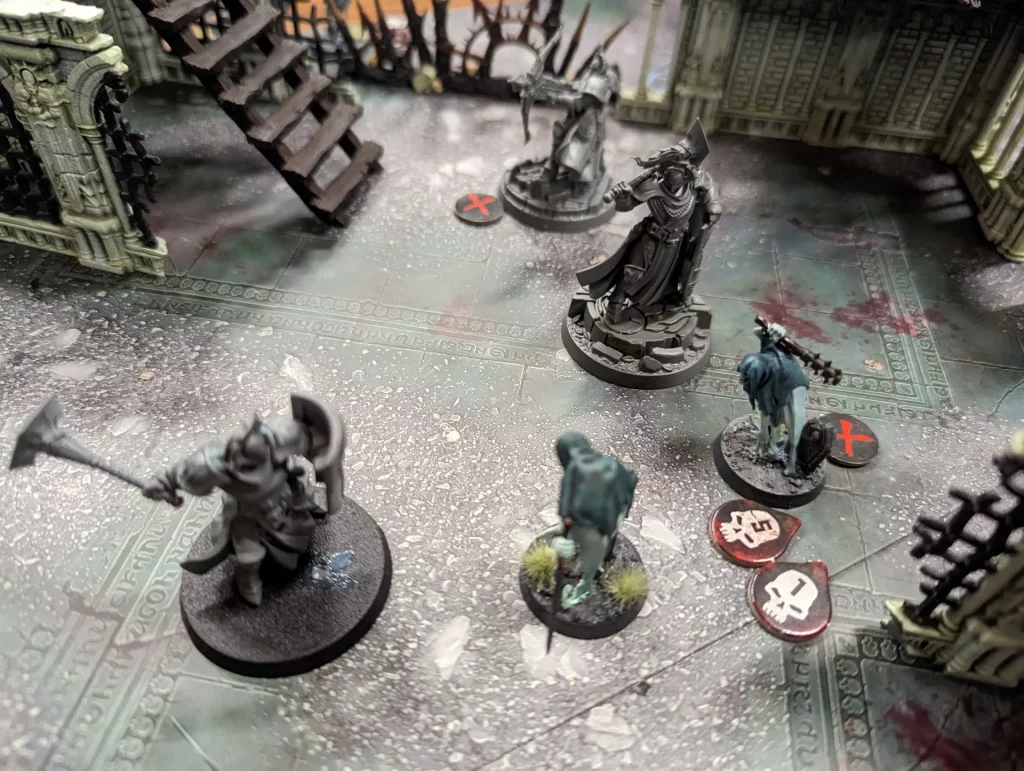
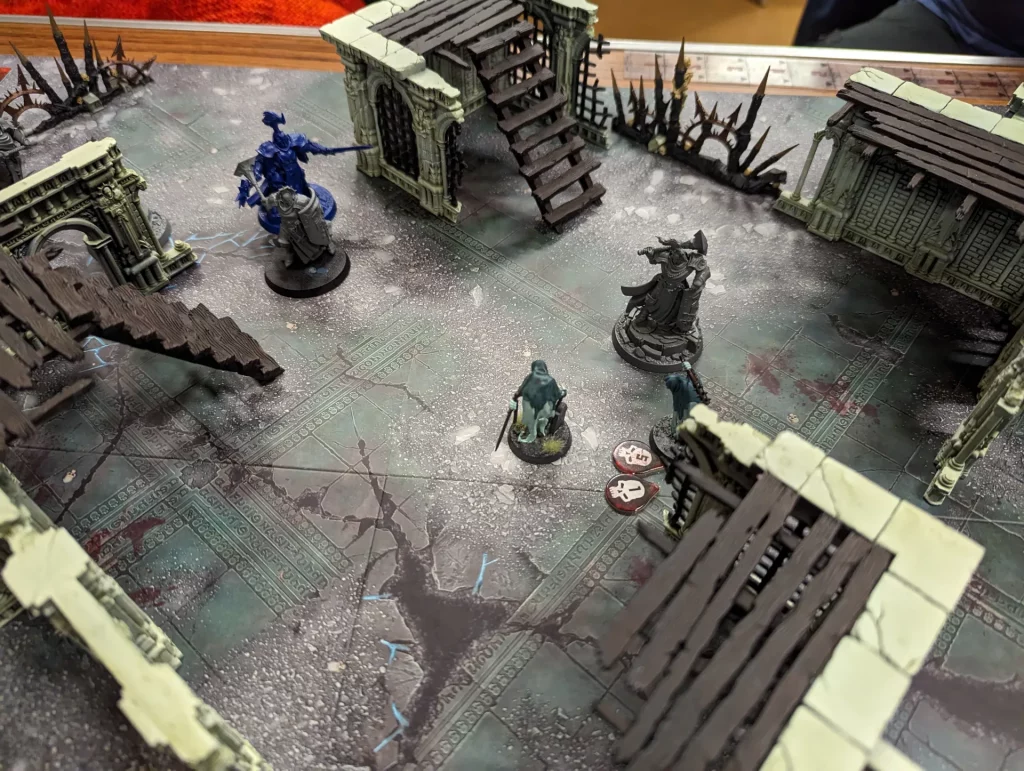
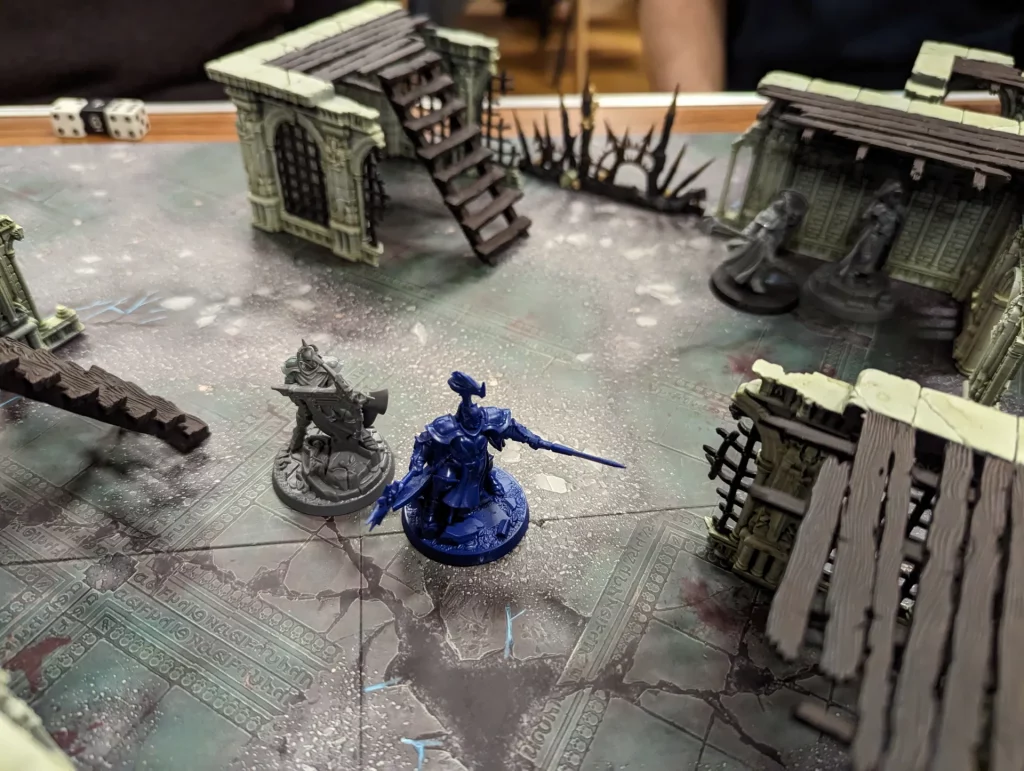
The first couple of rounds were pretty straight forward. Each round, we rolled 6D6 for initiative. Doubles, Triples and Quads allowed the use of special abilities. But whoever rolled the most singles also got the initiative. Each round we also had a single wild die, which would allow us to add to a single, double or triple to improve the result. The wild die could be saved to future rounds if wanted.
Abilities allowed extra movement, extra attacks, healing etc.
The big advantage that I had was that I could move through walls, allowing me a much greater degree of flexibility. My disadvantage was that none of my figures were particularly strong. In one on one combat, I needed to roll 5+ to do damage. My opponent needed a 3+. Most of my figures had 8 hits, whereas my opponent had 20. I also did one point of damage on a hit (2 on a roll of 6), whereas I was taking 2 (or 4) every time I was hit.
I tried to swarm individual opponents, but I started to die very quickly. By the end of turn 3, my leader and most of my hammer and shield troops had been killed, but I’d managed to distract the enemy away from my Dagger unit for a bit.
My dagger unit I then split up, trying to use the walls to prevent them from being attacked. One of the scenario rules was that if any of my dagger unit ended a turn within 4″ of the edge of the table, they would be lost. I forgot this and lost one on turn 4 due to this rule. On turn 5, I lost another to a crossbow bolt.
By turn 6, I had two left on different sides of the board. Unfortunately the enemy got initiative and managed to charge and kill my penultimate figure. My last one… he fled to the upper levels and managed to remain there (thanks to the rain) unharmed until the end of the turn.
So it was victory to the Nighthaunts, but only just. Not a single one of the Eternals had been killed. Though one had suffered half damage, in melee combat we were completely outmatched.
It was decided to have a second quick game. This one turned out to use much more open terrain, and a more aggressive victory conditions. Each side nominated a figure that was the target, and the game was won when one of the targets were slain.
We expected this game to go quickly. On turn 2, the ghost target was caught and killed in a single attack. The game lasted about 20 minutes, and we decided to call it for the evening.
We had a couple of fun games, and the rules were quick and simple. Definitely different to something like Dirtside, Stargrunt or even Saga. Unlike those games, it’s also much more tied in to Games Workshop figures. It’s not “here’s a set of rules, use any figures or terrain that you like”, but designed to sell figures and terrain. I don’t have too much of a problem with that, but it does reduce flexibility. I’m not adverse to playing it again, but it’s not something I would collect figures for.
I quite liked the way that the terrain, deployment and victory conditions were determined. I do wonder whether something similar could be done for a game like Stargrunt or Dirtside. A few pre-determined terrain maps which are randomly selected from, and a random scenario. Harder to do due to the lack of points in Stargrunt, but it might be worth having a play with the idea to see how it works out.
